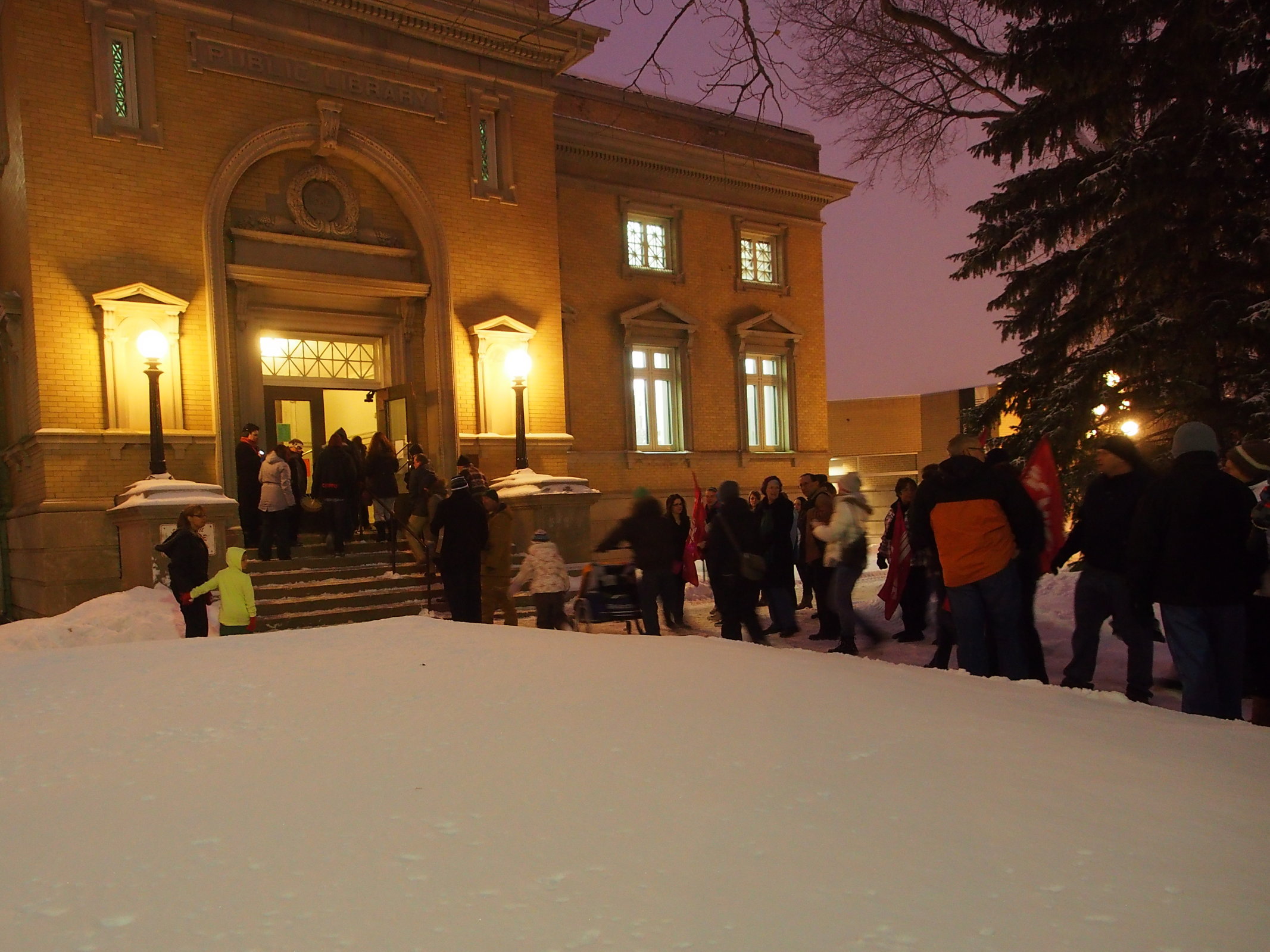Small City Solidarity
Small City Solidarity

Idle No More has been active in Moose Jaw, Saskatchewan. They have not had the visible or disruptive effect that some argue the other regional Idle No More movements have caused. January 28 was a “Global Day of Action” for Idle No More and the Moose Jaw group participated. A peaceful march was organized to go from Moose Jaw City Hall to the Moose Jaw Public Library, followed by a teach-in at a public library meeting room. Moose Jaw, though, may be an unusual place for this movement.
The demonstrators marched four city blocks, with little or no disruption to traffic. A police cruiser allowed extended crossing time while the participants followed the city sidewalk and crosswalks. The drums, signature of both the movement and of First Nation gatherings, were present, with Jeff Cappo and the Lone Creek Drum Group. The flag of the Metis Nation and several CUPE flags were seen. The evening’s weather was a chilly pleasant, with fog and a still -10C.
Upon gathering in the meeting room a small woman was counting people, perhaps a diligent volunteer. No, it was a librarian making sure the group did not exceed fire code, suggesting a better than expected turn-out. The room was full, with 65 of the allowed 66, and people entering and leaving. Representatives of the two local media were present. The speakers, local organizer Isabelle Hanson, CUPE National Education Representative Bill Robb, Amnesty International local chapter member Dicky Scholten, and Raven Thundersky, gave presentations outlining the cultural, legal, historical, environmental and legislative issues surrounding Idle No More.
Moose Jaw, politically speaking both federally and provincially, has generally been an even right-left split. Rarely have there been clear majorities in any direction, even at full three party strength. Everywhere west, southwest, and south of Moose Jaw is ‘cowboy country.’ A region vested in over a century of farming and ranching. A First Nation presence is limited, and absent in recent history. Signed in 1874, relocation was a condition of Treaty Four.
The closest reserves are over 130 kilometers northeast or south. Wood Mountain Lakota Sioux First Nation, located in the south, is not a Treaty reserve, and has a current population of about seventeen. Aside from Wood Mountain, the only other reserve in south-central and south-west Saskatchewan is the Nekaneet First Nation, 325 kilometers west. Signatories of Treaty Four, they refused to relocate. It is easy to understand how an Aboriginal person would be a rare sight in the region, even after the abolishment of the pass system. Canadian law required registered Indians obtain permission to leave the reserves until 1951.
Like many cities, Moose Jaw has grown to be more culturally diverse through urbanization and immigration. About eight percent of the city is of a ‘colorful’ origin. The First Nation community, being four of that eight percent is itself diverse, including Cree, Metis, Saulteaux, and Mi’kmaq nations to name a few. In 1996 Moose Jaw was host city to the failed “World’s Largest Pow Wow.” Perhaps a bolstering of police force and the opening of several beer gardens influenced that failure. Maybe it was a minor cultural misunderstanding. It was almost a decade ago. Nonetheless, a movement like Idle No More in this little city of about 35,000 seems remarkable. Perhaps that speaks to the strength of Idle No More.

